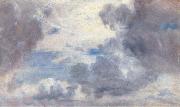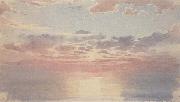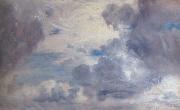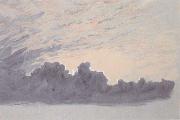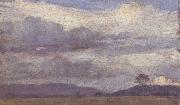Wholesale Oil Painting No Minimum |
|||||||||||
|
|
|||||||||||

|
|||||||||||
|
|
|
||||||||
John Constable1776-1837 British John Constable Locations 1837). English painter and draughtsman. His range and aspirations were less extensive than those of his contemporary J. M. W. Turner, but these two artists have traditionally been linked as the giants of early 19th-century British landscape painting and isolated from the many other artists practising landscape at a time when it was unprecedentedly popular. Constable has often been defined as the great naturalist and deliberately presented himself thus in his correspondence, although his stylistic variety indicates an instability in his perception of what constituted nature. He has also been characterized as having painted only the places he knew intimately, which other artists tended to pass by. While the exclusivity of Constable approach is indisputable, his concern with local scenery was not unique, being shared by the contemporary Norwich artists. By beginning to sketch in oil from nature seriously in 1808, he also conformed with the practice of artists such as Thomas Christopher Hofland (1777-1843), William Alfred Delamotte, Turner and, particularly, the pupils of John Linnell. Turner shared his commitment to establishing landscape as the equal of history painting, despite widespread disbelief in this notion. Nevertheless, although Constable was less singular than he might have liked people to believe, his single-mindedness in portraying so limited a range of sites was unique, and the brilliance of his oil sketching unprecedented, while none of his contemporaries was producing pictures resembling The Haywain (1821; London, N.G.) or the Leaping Horse (1825; London, RA). This very singularity was characteristic of British artists at a time when members of most occupations were stressing their individuality in the context of a rapidly developing capitalist economy |
||||||||
|
|
||||||||
Cloud study
Cloud study Painting ID:: 32963 |
mk82
1822
mk82 1822 |
|||||||
|
|
||||||||
Conrad MartensEngland/Australia Painter , 1801-1878 Australian painter, lithographer and librarian of English birth. Son of a London merchant, he studied c. 1816 under Copley Fielding. His training was as a watercolourist and his most important works are watercolours, although he also produced paintings in oils. His early work displays the taste then current for the Picturesque. Francis Danby, David Cox and Turner were artists he admired. Martens left for India in 1832 or 1833 but at Montevideo joined Charles Darwin's expedition, replacing Augustus Earle as topographical draughtsman aboard the Beagle. The work strengthened his observation of detail and skill as a draughtsman. He left the expedition in October 1834 and, travelling via Tahiti and New Zealand, arrived in Sydney in April 1835. There he worked as a professional artist, in the 1840s and 1850s producing lithographic views of the Sydney area to augment his income. In 1863 he was appointed Parliamentary Librarian, which secured his finances. The skills he had acquired aboard the Beagle helped to gain him commissions to depict the estates around Sydney. However, his admiration for Turner, and with this the desire to elevate landscape as a subject, prompted him to subordinate line to mood in a Romantic treatment of the landscape. His thoughts were clearly stated in a lecture on landscape painting given in 1856 at the Australian Library, Sydney (see Smith, 1975). |
||||||||
|
|
||||||||
|
|
Cloud study
Cloud study Painting ID:: 33100 |
mk82
c.1850
mk82 c.1850 |
||||||
|
|
||||||||
John Constable1776-1837 British John Constable Locations 1837). English painter and draughtsman. His range and aspirations were less extensive than those of his contemporary J. M. W. Turner, but these two artists have traditionally been linked as the giants of early 19th-century British landscape painting and isolated from the many other artists practising landscape at a time when it was unprecedentedly popular. Constable has often been defined as the great naturalist and deliberately presented himself thus in his correspondence, although his stylistic variety indicates an instability in his perception of what constituted nature. He has also been characterized as having painted only the places he knew intimately, which other artists tended to pass by. While the exclusivity of Constable approach is indisputable, his concern with local scenery was not unique, being shared by the contemporary Norwich artists. By beginning to sketch in oil from nature seriously in 1808, he also conformed with the practice of artists such as Thomas Christopher Hofland (1777-1843), William Alfred Delamotte, Turner and, particularly, the pupils of John Linnell. Turner shared his commitment to establishing landscape as the equal of history painting, despite widespread disbelief in this notion. Nevertheless, although Constable was less singular than he might have liked people to believe, his single-mindedness in portraying so limited a range of sites was unique, and the brilliance of his oil sketching unprecedented, while none of his contemporaries was producing pictures resembling The Haywain (1821; London, N.G.) or the Leaping Horse (1825; London, RA). This very singularity was characteristic of British artists at a time when members of most occupations were stressing their individuality in the context of a rapidly developing capitalist economy |
||||||||
|
|
||||||||
|
|
Cloud Study
Cloud Study Painting ID:: 33146 |
mk82
182
oil on paper
29.2x48.2 mk82 182 oil on paper 29.2x48.2 |
||||||
|
|
||||||||
John Constable1776-1837 British John Constable Locations 1837). English painter and draughtsman. His range and aspirations were less extensive than those of his contemporary J. M. W. Turner, but these two artists have traditionally been linked as the giants of early 19th-century British landscape painting and isolated from the many other artists practising landscape at a time when it was unprecedentedly popular. Constable has often been defined as the great naturalist and deliberately presented himself thus in his correspondence, although his stylistic variety indicates an instability in his perception of what constituted nature. He has also been characterized as having painted only the places he knew intimately, which other artists tended to pass by. While the exclusivity of Constable approach is indisputable, his concern with local scenery was not unique, being shared by the contemporary Norwich artists. By beginning to sketch in oil from nature seriously in 1808, he also conformed with the practice of artists such as Thomas Christopher Hofland (1777-1843), William Alfred Delamotte, Turner and, particularly, the pupils of John Linnell. Turner shared his commitment to establishing landscape as the equal of history painting, despite widespread disbelief in this notion. Nevertheless, although Constable was less singular than he might have liked people to believe, his single-mindedness in portraying so limited a range of sites was unique, and the brilliance of his oil sketching unprecedented, while none of his contemporaries was producing pictures resembling The Haywain (1821; London, N.G.) or the Leaping Horse (1825; London, RA). This very singularity was characteristic of British artists at a time when members of most occupations were stressing their individuality in the context of a rapidly developing capitalist economy |
||||||||
|
|
||||||||
|
|
Cloud Study
Cloud Study Painting ID:: 33147 |
mk82
1822
oil on paer
19.8x32
mk82 1822 oil on paer 19.8x32 |
||||||
|
|
||||||||
Conrad MartensEngland/Australia Painter , 1801-1878 Australian painter, lithographer and librarian of English birth. Son of a London merchant, he studied c. 1816 under Copley Fielding. His training was as a watercolourist and his most important works are watercolours, although he also produced paintings in oils. His early work displays the taste then current for the Picturesque. Francis Danby, David Cox and Turner were artists he admired. Martens left for India in 1832 or 1833 but at Montevideo joined Charles Darwin's expedition, replacing Augustus Earle as topographical draughtsman aboard the Beagle. The work strengthened his observation of detail and skill as a draughtsman. He left the expedition in October 1834 and, travelling via Tahiti and New Zealand, arrived in Sydney in April 1835. There he worked as a professional artist, in the 1840s and 1850s producing lithographic views of the Sydney area to augment his income. In 1863 he was appointed Parliamentary Librarian, which secured his finances. The skills he had acquired aboard the Beagle helped to gain him commissions to depict the estates around Sydney. However, his admiration for Turner, and with this the desire to elevate landscape as a subject, prompted him to subordinate line to mood in a Romantic treatment of the landscape. His thoughts were clearly stated in a lecture on landscape painting given in 1856 at the Australian Library, Sydney (see Smith, 1975). |
||||||||
|
|
||||||||
|
|
Cloud Study
Cloud Study Painting ID:: 33192 |
mk82
c.1850
watercolour
16.2x23.7
mk82 c.1850 watercolour 16.2x23.7 |
||||||
|
|
||||||||
Tom robertsBritish-born Australian Painter, 1856-1931 Australian painter of English birth. A leader of the HEIDELBERG SCHOOL and pioneer of plein-air Impressionism in Australia, he has been described as 'the father of Australian landscape painting'. Having moved to Melbourne in 1869, he studied at the East Collingwood and Carlton Schools of Design and the National Gallery of Victoria's School of Art (1874-81) while working as a photographic assistant. He led sketching expeditions with Frederick McCubbin and initiated student requests for reforms at the school. Returning to England, he enrolled in the Royal Academy Schools, London, on 6 December 1881, officially recommended by Edwin Long. In the summer of 1883 he toured Spain with the painter John Peter Russell. He learnt something of French Impressionism from Spanish art students Ramon Casas and Loreano Barrau (b 1864), and then followed the latter's advice to visit the Academie Julian in Paris. He returned to Melbourne in 1885 and the following year established the first summer camp at Box Hill with McCubbin and Louis Abrahams (1852-1903), portrayed in his painting the Artists' Camp (c. 1886; Melbourne, N.G. Victoria). According to the painter Arthur Streeton, it was Roberts's 'quick perception and expression of the principles of Impressionism in the year 1886, |
||||||||
|
|
||||||||
|
|
Cloud Study
Cloud Study Painting ID:: 33193 |
mk82
c.1850
watercolour
17.5x30.1
mk82 c.1850 watercolour 17.5x30.1 |
||||||
|
|
||||||||
Tom robertsBritish-born Australian Painter, 1856-1931 Australian painter of English birth. A leader of the HEIDELBERG SCHOOL and pioneer of plein-air Impressionism in Australia, he has been described as 'the father of Australian landscape painting'. Having moved to Melbourne in 1869, he studied at the East Collingwood and Carlton Schools of Design and the National Gallery of Victoria's School of Art (1874-81) while working as a photographic assistant. He led sketching expeditions with Frederick McCubbin and initiated student requests for reforms at the school. Returning to England, he enrolled in the Royal Academy Schools, London, on 6 December 1881, officially recommended by Edwin Long. In the summer of 1883 he toured Spain with the painter John Peter Russell. He learnt something of French Impressionism from Spanish art students Ramon Casas and Loreano Barrau (b 1864), and then followed the latter's advice to visit the Academie Julian in Paris. He returned to Melbourne in 1885 and the following year established the first summer camp at Box Hill with McCubbin and Louis Abrahams (1852-1903), portrayed in his painting the Artists' Camp (c. 1886; Melbourne, N.G. Victoria). According to the painter Arthur Streeton, it was Roberts's 'quick perception and expression of the principles of Impressionism in the year 1886, |
||||||||
|
|
||||||||
|
|
Cloud Study
Cloud Study Painting ID:: 33197 |
mk82
c.1889
Oil on wood panel
12x20.5
mk82 c.1889 Oil on wood panel 12x20.5 |
||||||
|
|
||||||||
|
Tom roberts British-born Australian Painter, 1856-1931 Australian painter of English birth. A leader of the HEIDELBERG SCHOOL and pioneer of plein-air Impressionism in Australia, he has been described as 'the father of Australian landscape painting'. Having moved to Melbourne in 1869, he studied at the East Collingwood and Carlton Schools of Design and the National Gallery of Victoria's School of Art (1874-81) while working as a photographic assistant. He led sketching expeditions with Frederick McCubbin and initiated student requests for reforms at the school. Returning to England, he enrolled in the Royal Academy Schools, London, on 6 December 1881, officially recommended by Edwin Long. In the summer of 1883 he toured Spain with the painter John Peter Russell. He learnt something of French Impressionism from Spanish art students Ramon Casas and Loreano Barrau (b 1864), and then followed the latter's advice to visit the Academie Julian in Paris. He returned to Melbourne in 1885 and the following year established the first summer camp at Box Hill with McCubbin and Louis Abrahams (1852-1903), portrayed in his painting the Artists' Camp (c. 1886; Melbourne, N.G. Victoria). According to the painter Arthur Streeton, it was Roberts's 'quick perception and expression of the principles of Impressionism in the year 1886, Cloud Study mk82 c.1889 Oil on wood panel 12x20.5 |
||||||||
|
|
||||||||
|
Prev Next
|
||||||||
|
|
||||||||
|
Related Paintings to Tom roberts :. |
||||||||
|
|
||||||||
|
CONTACT US |
